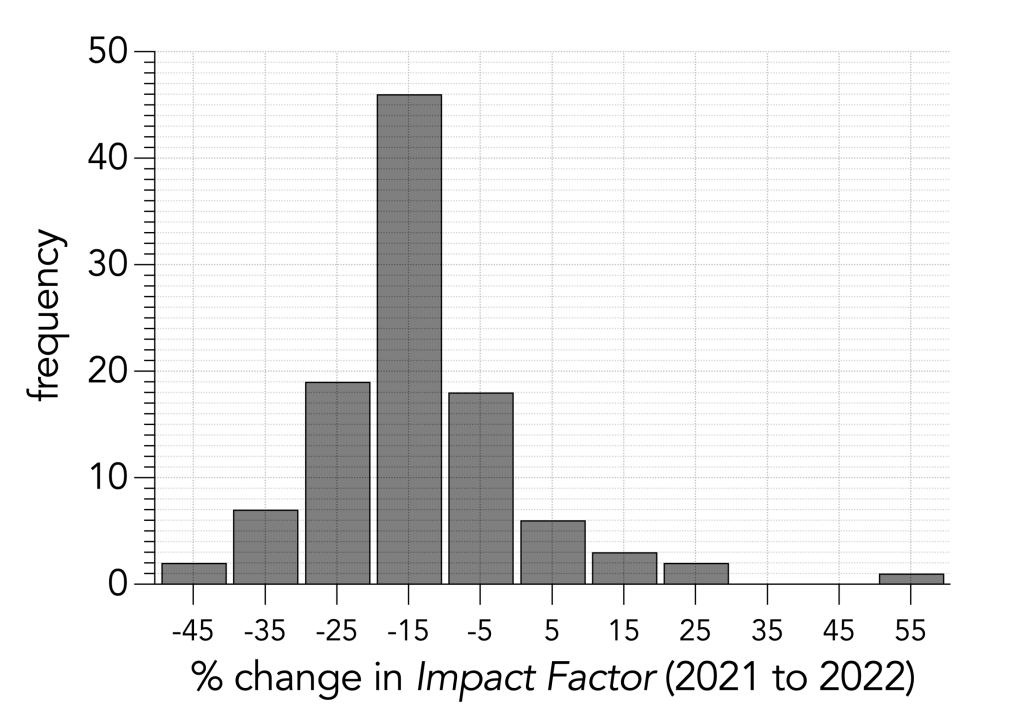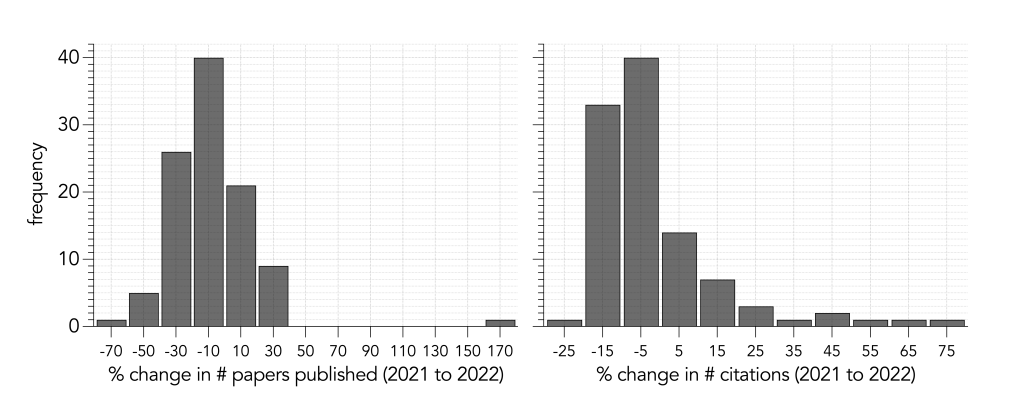
As I’ve done every year for the last 15 years, I can now present the 2022 conservation / ecology / sustainability journal ranks based on my (published) journal-ranking method.
Although both the Clarivate (Impact Factor, Journal Citation Indicator, Immediacy Index) and Scopus (CiteScore, Source-Normalised Impact Per Paper, SCImago Journal Rank) values have been out for about a month or so, the Google (h5-index, h5-median) scores only came out yesterday.
This year’s also a bit weird from the perspective of the Clarivate ranks. First, Impact Factors will no longer be provided to three significant digits, but only to one (e.g., 7.2 versus 7.162). That’s not such a big deal, but it does correct for relative ranks based on false precision. However, the biggest changes are more methdological — Impact Factors now take online articles into account (in the denominator), so most journals will have a lower Impact Factor this year compared to last. In fact, of the 105 journals in the ecology/conservation/multidisciplinary category that have data for both 2021 and 2022, the 2022 Impact Factors are a median 15% lower than the 2021 values.
Another effect in play appears to have been the pandemic. The worst of the pandemic happened right during the assessment period, and I’m pretty sure this is reflected both in terms of the number of articles published (down a median of 10%) and total number of citations in the assessment period (down 7%) per journal.
But using my method, these changes a somewhat irrelevant because I calculate relative ranks, not an absolute score.
I therefore present the new 2022 ranks for: (i) 108 ecology, conservation and multidisciplinary journals, (ii) 28 open-access (i.e., you have to pay) journals from the previous category, (iii) 66 ‘ecology’ journals, (iv) 31 ‘conservation’ journals, (v) 43 ‘sustainability’ journals (with general and energy-focussed journals included), and (vi) 21 ‘marine & freshwater’ journals.
Here are the results:
Read the rest of this entry »












 I do a lot of grant assessments for various funding agencies, including two years on the Royal Society of New Zealand’s Marsden Fund Panel (
I do a lot of grant assessments for various funding agencies, including two years on the Royal Society of New Zealand’s Marsden Fund Panel ( One of the things that I’ve often wondered about is whether making the effort to spread your scientific article’s message as far and wide as possible on social media actually brings you more citations.
One of the things that I’ve often wondered about is whether making the effort to spread your scientific article’s message as far and wide as possible on social media actually brings you more citations. I contend that publishing articles in nearly all peer-reviewed journals amounts to a form of
I contend that publishing articles in nearly all peer-reviewed journals amounts to a form of 


 This is probably more of an act of self-therapy on a Friday afternoon to alleviate some frustration, but it is an important issue all the same.
This is probably more of an act of self-therapy on a Friday afternoon to alleviate some frustration, but it is an important issue all the same.


